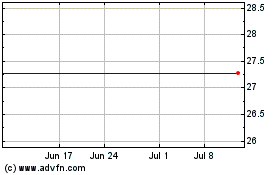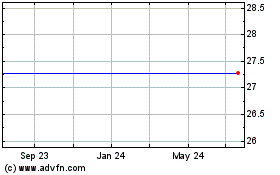Cloud Computing Rivalry Heats Up - Analyst Blog
December 05 2011 - 5:15AM
Zacks
Arch rivals Oracle Inc.
(ORCL) and SAP AG
(SAP) are gearing up for another battle
after the German company announced that it is on the verge of
acquiring California-based cloud-computing software company
SuccessFactors Inc. (SFSF) for
$3.4 billion in cash.
SuccessFactors is a leading
developer of software used by firms to evaluate employee
performance. The acquisition is expected to provide SAP a much
needed growth platform in the Software-as-a Service (SaaS) market,
where it faces significant competition from Oracle. Analysts
believe that the acquisition will boost SAP’s competitive position
in human resource applications, while reaffirming its commitment to
SaaS as a key business model.
However, we believe that Oracle is
better positioned for growth compared to SAP, primarily owing to
accretive acquisitions it has made over the past few years, which
has evolved into a strong product pipeline. In October this year,
Oracle acquired RightNow Technologies Inc, a premier
Software-as-a-Service (SaaS) provider and a rival of SAP for $1.43
billion. For further details please see Oracle to Acquire
RightNow.
The acquisition expanded Oracle's
public cloud offering. The public cloud, which originally comprises
existing products including fusion applications, expanded the
company’s penetration into the SaaS application space. The addition
of RightNow also helped Oracle to target Salesforce.com
Inc.’s (CRM) service cloud offering and
took the prevailing competition between the two to the next
level.
On the other hand, SAP has been a
laggard in this space over the years. According to Bloomberg,
Oracle has spent more than $42 billion on acquisitions since the
beginning of 2005, while SAP had only made only two large
acquisitions in its history before SuccessFactors. SAP lags Oracle
in the SaaS market, owing to its late entry in the market and this
will hurt its competitive position going forward, in our view.
SaaS Consolidations to
continue…
SaaS has gained immense importance
in recent times due to the increasing adoption of cloud computing.
According to research firm IDC, cloud services are moving from the
early adopter stage to a core part of mainstream operations. IDC
forecasts that approximately 80% of new software offerings will be
available as cloud services by 2014 and over a third of software
purchases would be through the cloud. Most importantly, public and
private clouds are expected to drive 15% of IT spending, growing 4x
to 5x the rate of the overall IT market.
According to research firm
Forrester, cloud computing revenue is expected to increase from
approximately $41.0 billion in 2011 to $241.0 billion in 2020,
while another firm, Gartner projects revenue of $148.8 billion by
2014, higher than Forrester’s forecast of $118.7 billion for the
same period.
SaaS, a software delivery method
that enables data access from any device with an Internet
connection and web browser, touched the $10 billion mark in 2010
and is expected to more than double to $21.3 billion by 2015, much
faster than traditional software, according to market research firm
Gartner. Customer Relationship Management (CRM) continues to be the
most prolific market for SaaS, with revenues estimated to reach
$3.8 billion in 2011, up from $3.2 billion in 2010.
This huge growth potential has
prompted companies such as Oracle and SAP, who were initially
hesitant to enter the domain, to spend more on accretive
acquisitions in order to gain traction in this market. Both Oracle
and SAP paid huge premiums to acquire RightNow (22.0%) and
SuccessFactors (54.0%), which clearly reflects the huge growth
potential.
Beside Oracle and SAP,
Salesforce.com also continued its acquisition spree in 2011, in a
bid to diversify its traditional customer relationship management
(CRM) software. Salesforce has acquired Radian 6, Assistly,
Manymoon, Heroku and Etacts in 2011. Most recently, the company
announced the acquisition of Model Metrics, a mobile and social
cloud consulting services company.
Our Take
We expect further consolidation in
the SaaS market going forward. According to Gartner, Oracle will
continue to acquire and roll out more cloud oriented products over
the next couple of years, thereby boosting its position in the SaaS
market. SAP is also expected to get more aggressive with its
acquisition strategy in order to make up for its late start.
We believe that competition will
continue to increase in cloud computing markets. Niche companies,
which are easy to integrate within existing or new product lines
will be the primary acquisition targets going forward, in our view.
We also believe that companies with significant free cash flow will
have an upper hand over the long term.
We remain Neutral on Oracle, SAP
and Salesforce over the long term (6-12 months). Currently, Oracle
has a Zacks #2 Rank, which implies a Buy rating on a short-term
basis. Both SAP and Salesforce have a Zacks #3 Rank, which implies
a Hold rating on a short-term basis.
SALESFORCE.COM (CRM): Free Stock Analysis Report
ORACLE CORP (ORCL): Free Stock Analysis Report
SAP AG ADR (SAP): Free Stock Analysis Report
SUCCESSFACTORS (SFSF): Free Stock Analysis Report
Zacks Investment Research
Successfactors, Inc. (MM) (NASDAQ:SFSF)
Historical Stock Chart
From Mar 2024 to Apr 2024

Successfactors, Inc. (MM) (NASDAQ:SFSF)
Historical Stock Chart
From Apr 2023 to Apr 2024
